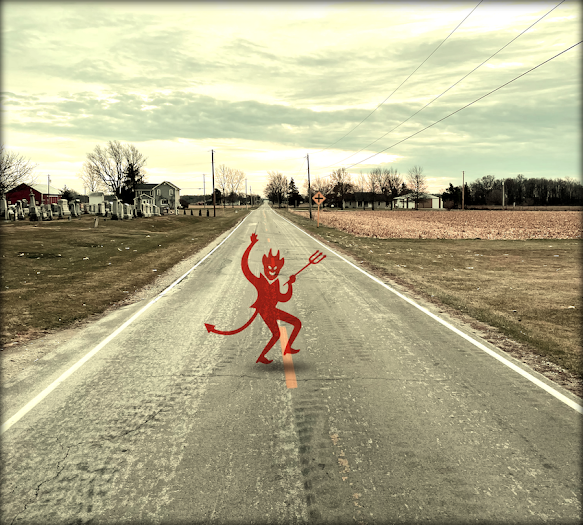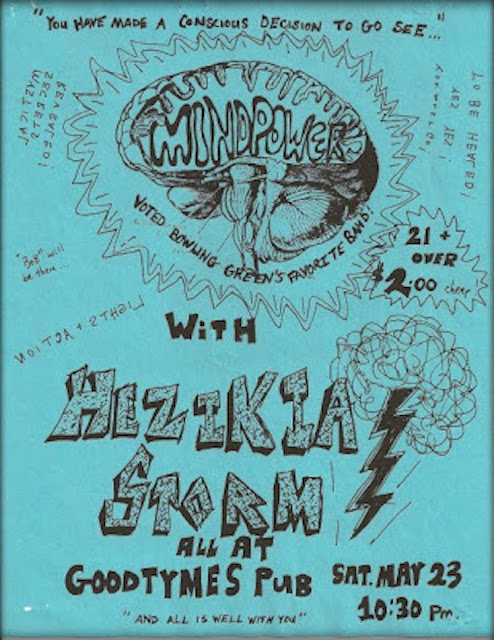In Search of the Devil’s Hole: Part 2 - Devil Hole Prairie
On Thanksgiving Day last year, I drove the full length of Devil's Hole Road to see what I could find.
In truth I was looking for the Hole, or at least evidence that some sort of a portal once existed in this part of the otherwise unremarkably flat and vacant landscape. But I couldn't find it. I'm still not fully attuned to the voices of the landscape. Sometimes they whisper in a tongue that's unintelligible. Other times all I hear is the traffic.
What I did find is a place in which all context and interrelationship has been stripped away. Open fields flat as the sea, cloudscapes, all motion stilled and far off. A swamp drained and denatured and that exists largely in name only. A past that's as muted as the colors of a late afternoon in late November. If there are clues about the Hole in this topography, they are gridded to almost nothing. Roads slice straight through bioregions and habitats, cutting through the sinews and tendons of the land. There's an eeriness here, shaped as much by what's missing as what's still here.
But if a place exists horizontally in space, it exists too in the vertical, in the temporal dimension, buried down in uncanny layers of time. The road itself carries the memories that lie beneath it, as all roads and pathways do, capturing the passing dreams of those who traveled this way before. Perhaps as I drove along the road, I reanimated those lost dreams. The Cibecue Apache of Arizona - and maybe the indigenous peoples who once traveled through this place did too? - use pathways and tracks as figures for a past that's inaccessible to we the living but one that's was still walked by the ancestors.
This path past can be activated by the memorializing 'footprints' of the old songs, dusty relics, forgotten stories, and lingering place names. I find a few of these stories in a couple of century-old local newspapers and a copy of the 1910 Pioneer Scrapbook of Wood County I buy on eBay. "A place is a story happening many times" writes poet Kim Stafford, and the old words and stories pile up like November leaves. They give concrete form to the invisible terrain lurking all around me.
In the most impenetrable and tangled part of the generally impenetrable and tangled million-acre Great Black Swamp whose wastes, filled with "Indians, wolves, bears, raccoons and wildcat," so intimidated the early settlers, in a mile wide clearing of trees felled by a tornado, was a particularly riotous tangle of quaking aspens and dense prairie grass taller than a person. This was the Devil's Hole. Partially submerged in water and thick clinging mud and haunted by clouds of biting insects, a place so "swampy and dismal, inhabited by wild animals, snakes and other reptiles" couldn't be anything other than "a fit abiding place for the 'Evil One.'"
Who first invoked The Old Snake's blasphemous name to explain the miseries heaped by the Swamp on its white interlopers is surely lost to time. But this unpeopled vastness, so radically at odds with the whims and wishes of those who hunkered in puddles of lamp light on the edges of its endless mystery, was always ripe for tales of magic and dread, especially as day fled through the dark treetops and the dreams of the lonely were drowned out by the buzzing of a million cicadas.
The old stories aim to dispel some of that darkness, even while they levy it still further for imaginative effect. One of these stories dates to the War of 1812 and General William Henry Harrison's march through the Swamp on his way to confront the British at Detroit. A scout is lost, and he's gone for a day, or perhaps three weeks depending on who you listen to, before he makes it back to his garrison. "Upon being interrogated as to where he had been" writes Charles Evers a century after in the Pioneer Scrap-Book, "he replied that he had got lost in the 'Devil's Hole,' asserting that he had truly discovered the home of Satan."
Another tells of a deerhunter who, after "toiling all day in the great and glorious primeval out-doors," decides to camp somewhere in the tangled mile-wide clearing of quaking aspens and prairie grass. In the night he is startled awake by a noise he's never heard before. Looking up he sees, to his horror, a "creature-not-of-this-world!," the "genuine, sure-enough" Baal the Prince, clambering up a tree. The hunter panics, blundering back through the darkness towards the promise of light and people, leaving behind a "very good rifle" that is "buried still beneath the black soil of a Middleton township farm."
Old Scratch. Abbadon. The Great Deceiver.
His uncanny woods are mostly gone now, reduced to stray patches that stand sullen in the grey afternoon between the big stubble fields as distant cars and trucks crawl past, heading north to the city. I think of devils in treetops and wonder aloud about what was and what isn't. "Personally" says my compadre V, "I imagine him looking like the Underwood Deviled Ham devil." I picture the Lord of the Flies in his jaunty coat and Cuban heels, hamming it up half way up a hickory tree, a cheerful red tail curled at the ready, looking rather less than terrifying.
I suppose, though, in the middle of the night, I'd run too....
"Underwood, see?" continues V, following a thread. "Where the fairies and imps live..." The fae forest folk have always seemed benign to me, much like the charming red devil on the tin. "If you see the fae folk as benign, let's hope you don't wander too far into the woods!" V reminds me, more familiar as she is with the ways of the unseen.
Still. I hear again the far off whispers of the invisible landscape and I strain to catch its syllables. Perhaps it's just the traffic out on the highway, but I want to hear more.
The sun is a hazy light through high cirrus just above the dark fringes of the silent trees.
[Next time: Part 3 - Abbadon Hope]
----------
References
Canfield, Dwight. "The Devil's Hole in Wood County." The Daily Sentinel-Tribune. Bowling Green, Ohio. 6 March 1924. 3.
Evers, Charles W. "'The Devil's Hole': An Almost Impenetrable Bog--What Was the Origin of the Name? Is it a Den?" Pioneer Scrap-Book of Wood County, Ohio and the Maumee Valley. (1910). n.p.: Heritage Books, 2002. 165.
Muir, J.D. "Devil's Hole: A Sketch of Famous Black Swamp History." Pemberville Leader. Pemberville, Ohio. 28 August 1913. 1.
Stafford, Kim. "There Are No Names But Stories." Places and Stories. Pittsburgh: Carnegie Mellon University Press, 1987.
Waugh, Clyde Ashley. "The Devil's Hole." The Daily Sentinel-Tribune. Bowling Green, Ohio. 16 January 1907. 8.










Fantastic!
ReplyDeleteThank you! :)
Delete